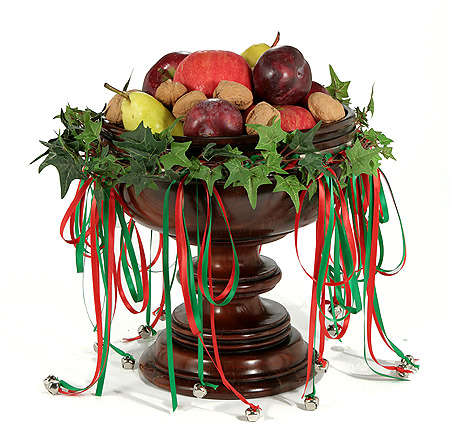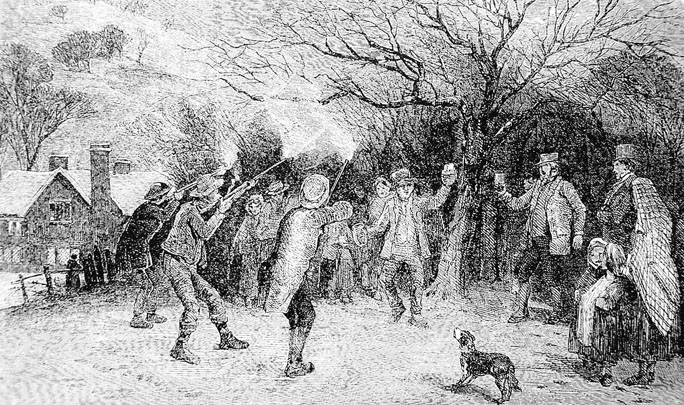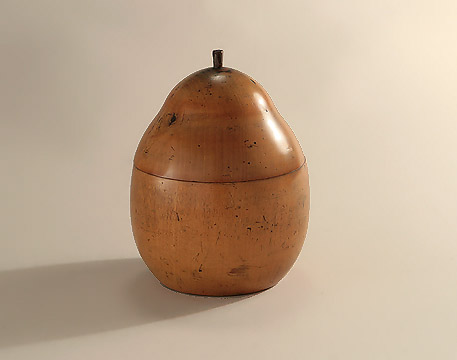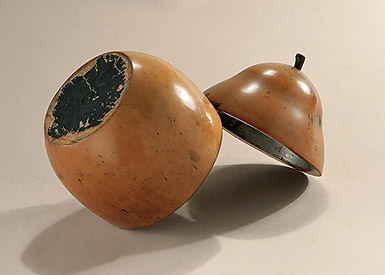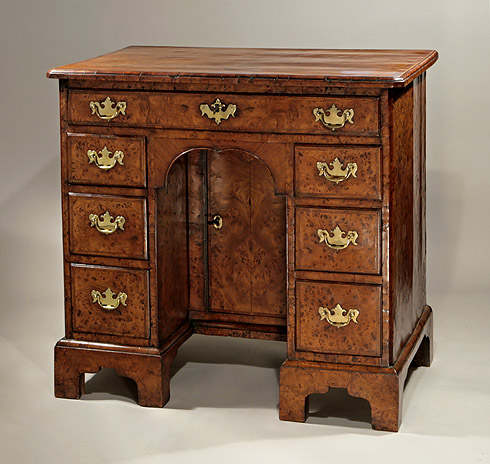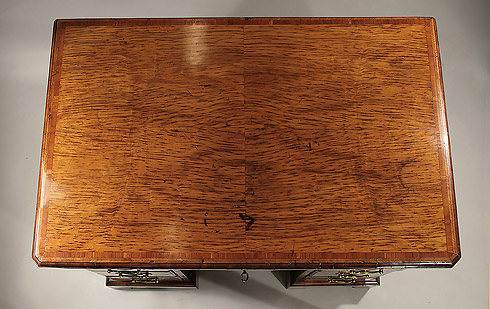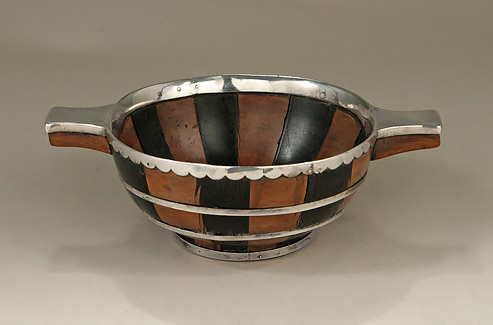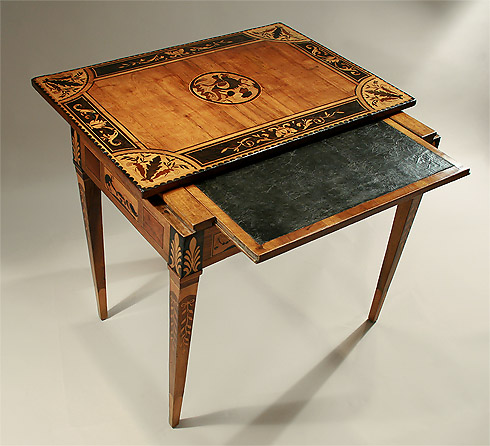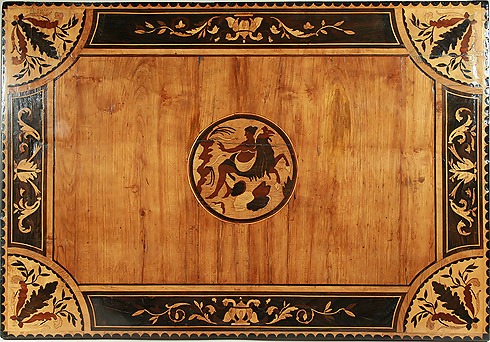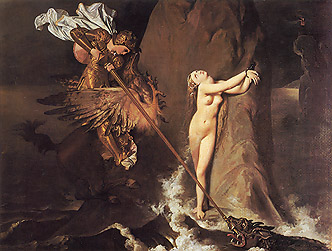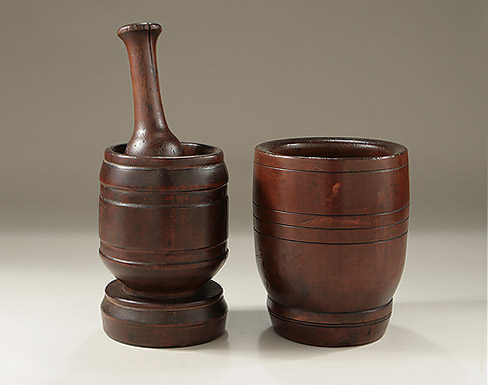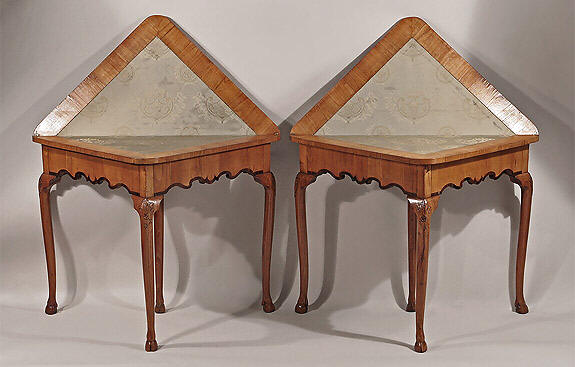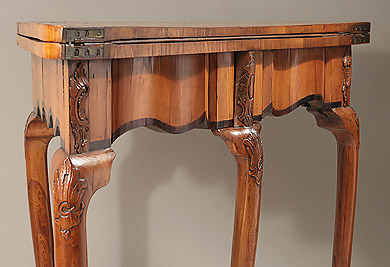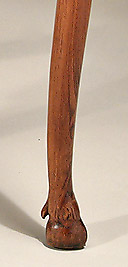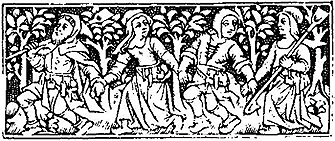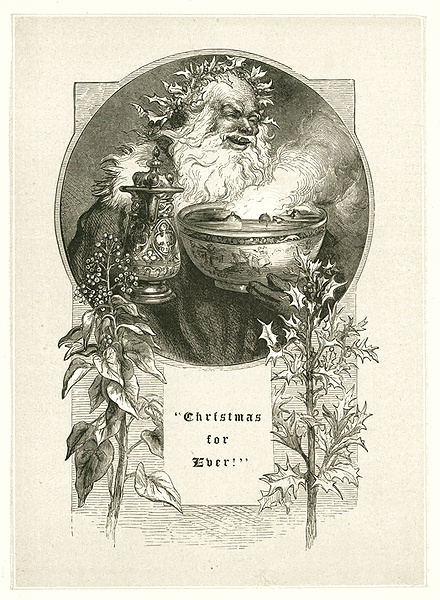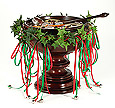|
M. FORD CREECH ANTIQUES & FINE ARTS
WASSAIL! WASSAIL! ALL OVER THE TOWN...
|
|||||||||||||||||||||||
|
|
|||||||||||||||||||||||
|
Wassail! Wassail! all over the town, Our toast is it white, our ale it is brown; Our bowl it is made from the white maple tree; With the wassailing* bowl....we'll drink to thee.
|
|||||||||||||||||||||||
|
|
|||||||||||||||||||||||
|
& FOR THE FRUIT TREES....
|
|||||||||||||||||||||||
|
|
|||||||||||||||||||||||
|
|||||||||||||||||||||||
|
|
|||||||||||||||||||||||
|
George III Fruitwood Tea Caddy, in the form of a Pear
Perhaps there is no better symbol for the English Yuletide "wassailing of fruit trees" than the turned fruitwood tea caddy. Introduced in the late 18th century, these fruit-forms are today probably the most sought-after of all caddies. There is conjecture that these caddies were made in imitation of the early 18th century Chinese pears and aubergines. English (and German) examples were predominately apples and pears; however cantaloupes, aubergines, and even strawberries and pineapples have been found. Unlike the Chinese caddies, which had contrasting woods and screw-on lids, the European models were simply polished or varnished, having loosely fitted hinged lids that were lifted by means of a stalk - many of with have been broken or lost. The interiors were lined with foil, now softly disintegrated through years of use. Such is their popularity that many imitations are still made today,. However this one is from the late 18th or early 19th century English Georgian period.
|
|||||||||||||||||||||||
|
|
|||||||||||||||||||||||
|
|
|||||||||||||||||||||||
|
|
|||||||||||||||||||||||
|
|
|||||||||||||||||||||||
|
George I Highly Figured Burr Elmwood & Fruitwood Kneehole Desk, England, c1725
These small case pieces have an interesting history, originally being a piece of "bedroom furniture" that had multiple purposes : first in the 17th century as a "dressing table", eventually finding favor as a small "kneehole desk". These go by both names. The recessed door is known as a "prospect door", named after the "view", as one would perceive through upright trees, mimicked by the two side tiers of drawers. As I have stated before, I find these desks among the most perfect proportions (artistically) that occur in British furniture. I keep one in my living room for no purpose other than its beauty. Somehow the "architecture" of it, and the play of light and shadow accentuated by the wonderful closed batwing brasses, rings like music. The woods and color on this example are exceptional - more vibrant than walnut. The brasses are original. The outer sides and inner prospect recess are burr-veneered as well as the front. Also note the crossbanding on the quarter-veneered wonderfully grained fruitwood (probably crabapple) top.
|
|||||||||||||||||||||||
|
|
|||||||||||||||||||||||
|
George III Fruitwood Mortar and Pestle, and a Fruitwood Mortar England, c1800
The mortar and pestle has been used for grinding food and medicines since the early Egyptian period. They date to the earliest shamans and medicine men among most cultures. The tools were mentioned in the “Elers Papyrus” of 1550 BC (the oldest preserved piece of medical literature) and in the Old Testament. Their names derive from Latin, mortar from mortarium, meaning, among other usages, "receptacle for pounding" and "product of grinding or pounding"; and pestle from pistillum, meaning "pounder", leading to English pestle. The mortar and pestle remains today the iconic symbol for medical prescriptions - and displayed by your local pharmacist.
The woods used for mortars and pestles range from the very dense imported lignum vitae, to the lighter weight native fruitwoods - from the orchards of England and Europe. They make outstanding strong decorative objects and collections -- as well as holders for all those small things you have absolutely no idea what to do with.
|
|||||||||||||||||||||||
|
|
|||||||||||||||||||||||
|
|
|||||||||||||||||||||||
|
|||||||||||||||||||||||
|
|
|||||||||||||||||||||||
|
This year, we offered and sold the following fruitwood chair. However, no mention of fruitwood could be made without its inclusion. Made likely of "wild cherry", and sitting like a throne, it hailed from the North of England. On the crestrail were three stylized trees - whether a "tribute to the fruit trees", or a family arms, we were unable to ascertain. It has every device that might have been the desire of the commissioner - or of the chairmaker himself. We thank the maker for its creation, and the current owner for its purchase. For your pleasure, please click for its full illustration.
|
|||||||||||||||||||||||
|
|
|||||||||||||||||||||||
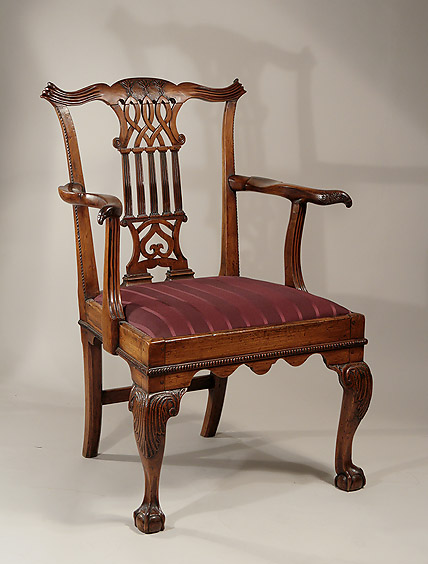 |
|||||||||||||||||||||||
|
|
|||||||||||||||||||||||
|
|
|||||||||||||||||||||||
|
And so we end our "Tribute to the Fruit Trees",
|
|||||||||||||||||||||||
|
with a single verse with "The Cherry Tree Carol", and the wishes that, with all its feasting and revelry - with all its kind sentiment, we could have "Christmas for Ever" : |
|||||||||||||||||||||||
|
"Saint Joseph was an old man, and old man was he; He married sweet Mary, and a Virgin was she. And as they were walking in the garden so green, She spied some ripe cherries hanging over you treen. Said Mary to Joseph, with her sweet lips, and smiled, 'Go, pluck me yon ripe cherries off, for to give to my Child.' Said Joseph to the cherry-tree 'Come, bow to my knee, And I will pluck thy cherries off, by one, two and three.' And as she stooped over Him, she heard angels sing : 'God bless our sweet Savior and our heavenly King.'" - "Cherry Tree Carol" - Traditional, England, c1400
|
|||||||||||||||||||||||
|
|
|||||||||||||||||||||||
|
|
|||||||||||||||||||||||
|
"Old Christmas with the Bowl and Holly", John Gilbert, Engraver John Gilbert, 1879 Top : "Wassail! Wassail! All Over the Town", English Traditional Carol, 18th Century or earlier Top : George III Silver-Mounted Lignum Vitae Wassail Bowl, England, c1800, Personal Collection
|
|||||||||||||||||||||||
|
|
|||||||||||||||||||||||
|
Please click the above images or titles for further images and information
Click below for our other Christmas Catalogs, featuring the British Yuletide custom of Wassail : All Out of Darkness We Have Light
|
|||||||||||||||||||||||
|
|
|||||||||||||||||||||||
|
As usual, please email or call if you have any questions.
May it for you - where ever you are - be a very glad "Christmas - for Ever!"
"Wæs Hal!"
Millicent Ford Creech
901-761-1163 (gallery) / 901-827-4668 (cell)
581 S. PERKINS ROAD / LAURELWOOD COLLECTION / MEMPHIS, TN 38117 Hours : Wed.-Sat. 11-6, or by appointment
Complimentary Gift Wrapping
mfcreech@bellsouth.net or mfordcreech@gmail.com
To receive our periodic email catalogs, please click here
American Express, Mastercard, Visa and Discover accepted
|
|||||||||||||||||||||||
|
|
|||||||||||||||||||||||
|
Home Accessories Ceramics Early Asian Ceramics Fine Art Furniture Glassware Silver
|
|||||||||||||||||||||||
|
|
|||||||||||||||||||||||
|
© Some text and images are copyrighted by their authors and used by permission. They appear here for your enjoyment only. Please do not reproduce without specific written permission.
Wassail! Wassail! All over the town, Christmas
|
|||||||||||||||||||||||
